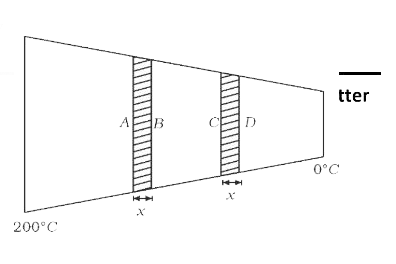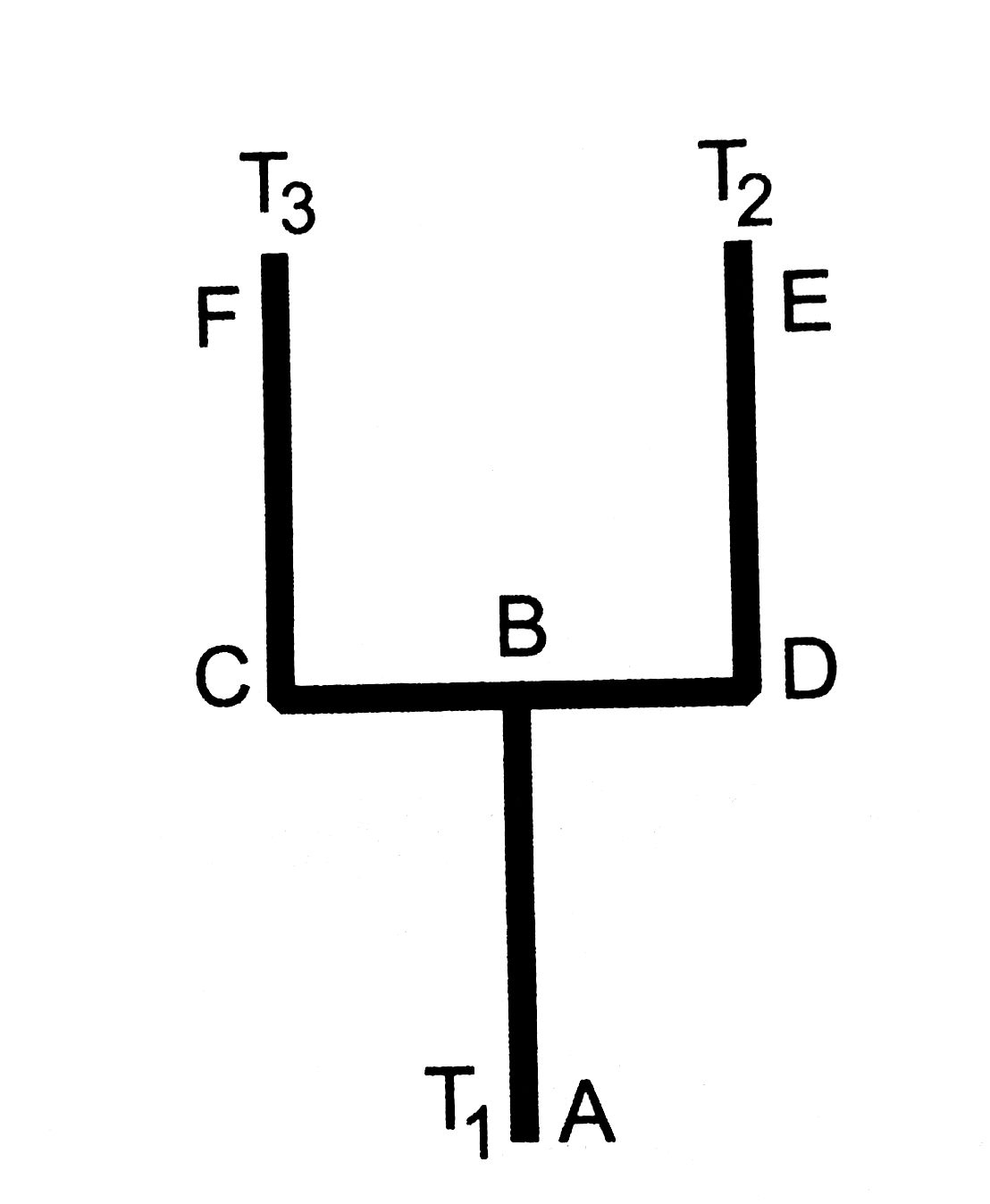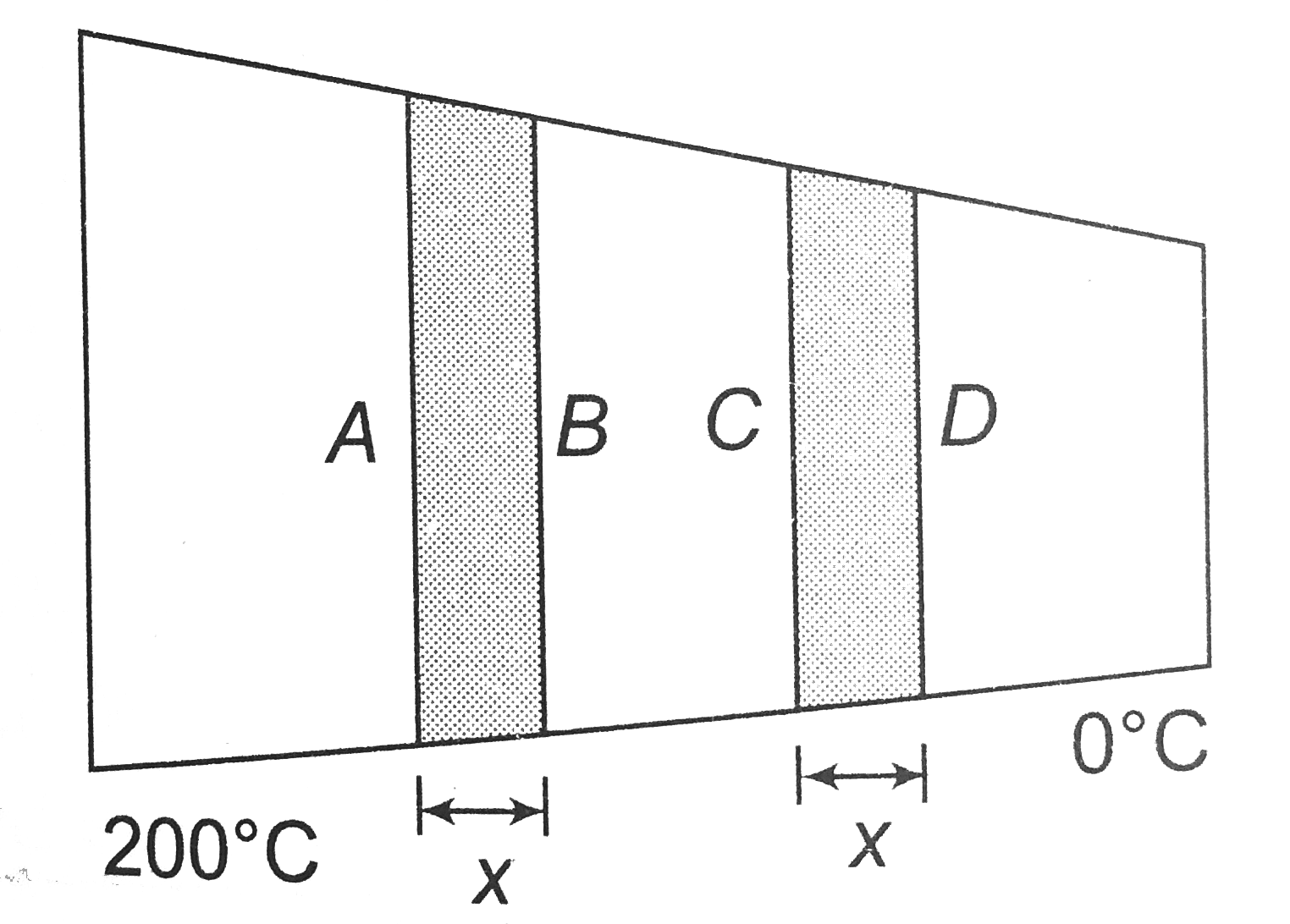A rod of negligible heat capacity has length L, area of cross-section A and thermal conductivity K. The temperature of one end is maintained at 0∘C and the other end is slowly linearly varied from 0∘C to θ∘0C in time t0 Assuming no loss of heat through the sides, find the total heat transimitted through the rod in time t0
Resistance of rod R=LKA
The temperature of left end varies linearly from 0∘C to θ0.∘C in the time t0
Temperature of left end at time t
θ=0+θ0−0t0t=θ0t0t
Heat current i=θ−0R=θR
dQdt=θ0Rt0t
∫dQ=θ0Rt2∫t00tdt
Q=θ0Rt0t202
=θ0t02R=θ0t0KA2L

Topper's Solved these Questions
Similar Questions
A rod of negligible heat capacity has length 20cm, area of cross section 1.0cm2 and thermal conductivity 200Wm−1^(@)C^(-1).Thetemperatureofo≠endisma∫a∈edat0^(@)Candtˆoftheotherendisshowlyandl∈earlyvariedom0^(@)C→60^(@)C in 10 minutes. Assuming no loss of heat through the sides, find the total heat transmitted through the rod in these 10 minutes.
View SolutionA rod of negligible heat capacity has length 40cm, area of cross-section 1.0cm2 and thermal conductivity 100Wm−1∘ C−1. The temperature of one end is maintained at 0o C and that of the other end is slowly and linearly varied 'from 0∘C to 60∘C in 10min. Assuming no loss of heat through the sides', find the total heat transmitted (in J) through the rod in these 10min.
View Solution
Knowledge Check
A rod of negligible heat capacity has a length of 50 cm, area of cross section 5cm2 and thermal conductivity 500 W/m∘C. The temperature of one end is maintained at 0∘C and that fo the other end is slowly and linearly varied from 0∘C to 60∘C in 20 min. Assuming no heat loss through the lateral side, the total heat transmitted throught he rod in 20 minutes is
A18 kJB8 kJC27 kJD4.5 kJOne end of conducting rod is maintained at temperature 50∘C and at the other end ice is melting at 0∘C. The rate of melting of ice is doubled if:
Athe temperature is made 200∘C and the area of cross-section of the rod is doubledBthe temperature is made 100∘C and the length of the rod is made four timeCarea of cross-section of the rod is halved and length is doubled.Dthe temperature is made 100∘C and area of cross-section of rod and length both are doubled.Two ends of a conducting rod of varying cross-section are maintained at 200∘Cand0∘C respectively. In steady state :
 Atemperature differences across AB and CD are equalBtemperature difference across AB is greater than that across CDCtemperature difference across AB is less than that across CDDtemperature difference may be equal or different depending upon thermal conductivity of the rod.
Atemperature differences across AB and CD are equalBtemperature difference across AB is greater than that across CDCtemperature difference across AB is less than that across CDDtemperature difference may be equal or different depending upon thermal conductivity of the rod.
A brass rod is in thermal contact with a heat reservoir at 127∘C at one end and a heat reservoir at 27∘C at the other end. Find the total change in entropy arising from the process of conduction of 1200 cal of heat through the rod. Does the entropy of the rod change?
View SolutionFour identical rods AB, CD, CF and DE are joined as shown in figure. The length, cross-sectional area and thermal conductivity of each rod are l, A and K respectively. The ends A, E and F are maintained at temperature T1 , T2 and T3 respectively. Assuming no loss of heat to the atmospere, find the temperature at B.

View SolutionThree rods of copper, brass and steel are welded together to form a Y -shaped structure. The cross-sectional area of each rod is 4cm2. The end of copper rod is maintained at 100∘C and the ends of the brass and steel rods at 80∘C and 60∘C respectively. Assume that there is no loss of heat from the surfaces of the rods. The lengths of rods are : copper 46 cm, brass 13 cm and steel 12 cm.
(a) What is the temperature of the junction point?
(b) What is the heat current in the copper rod?
K(copper) = 0.92, K (steel) = 0.12 and K(brass) = 0.26 cal/cm−s∘C .
View SolutionTwo ends of a conducting rod of varying cross-section are maintained at 200∘C and 0∘C respectively. In steady state:

View SolutionTwo adiabatic vessels, each containing the same mass m of water but at different temperatures, are connected by a rod of length L, cross-section A, and thermal conductivity K. the ends of the rod are inserted into the vessels, while the rest of the rod is insulated so that .there is negligible loss of heat into the atmosphere. The specific heat capacity of water is s, while that of the rod is negligible. The temperature difference between the two vessels reduces to l/e of its original value after a time, δt. The thermal conductivity (K) of the rod may be expressed by:
View Solution

